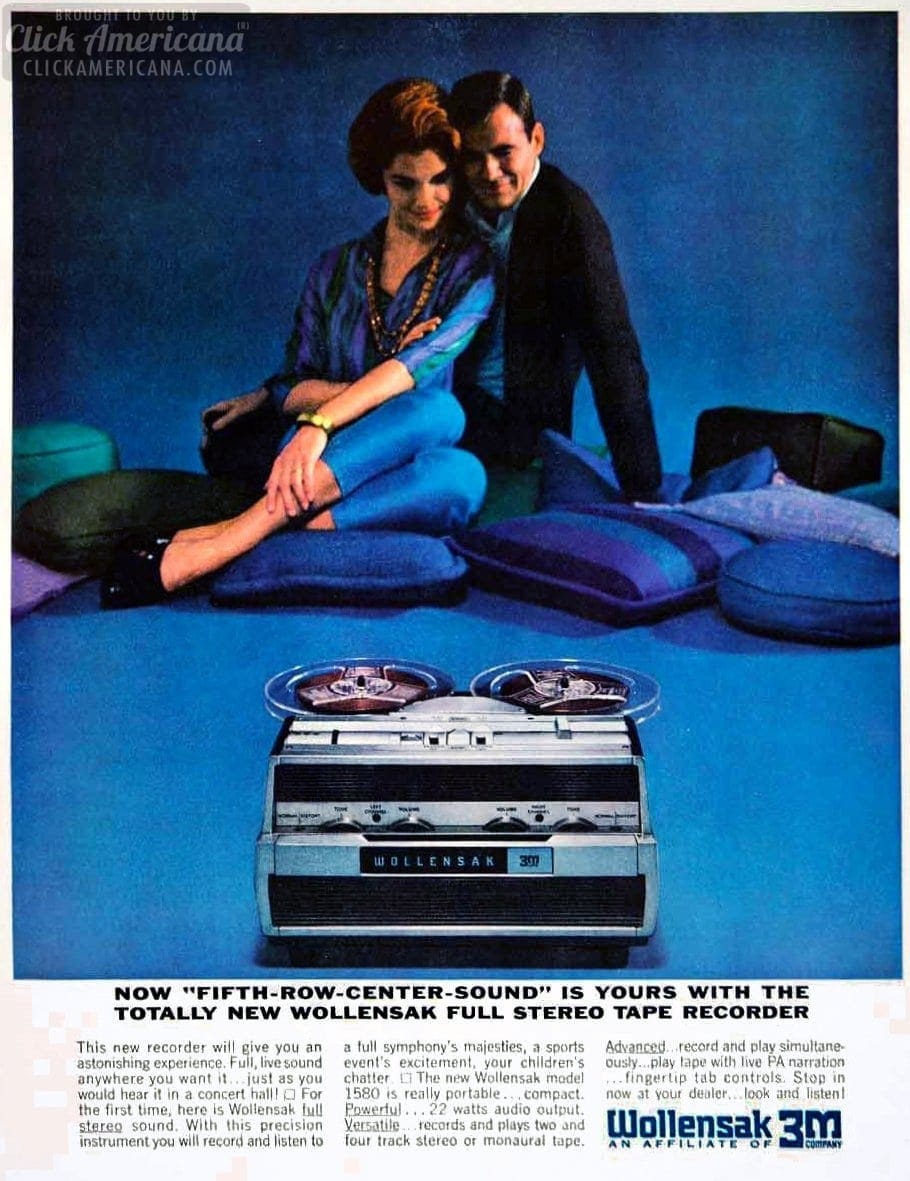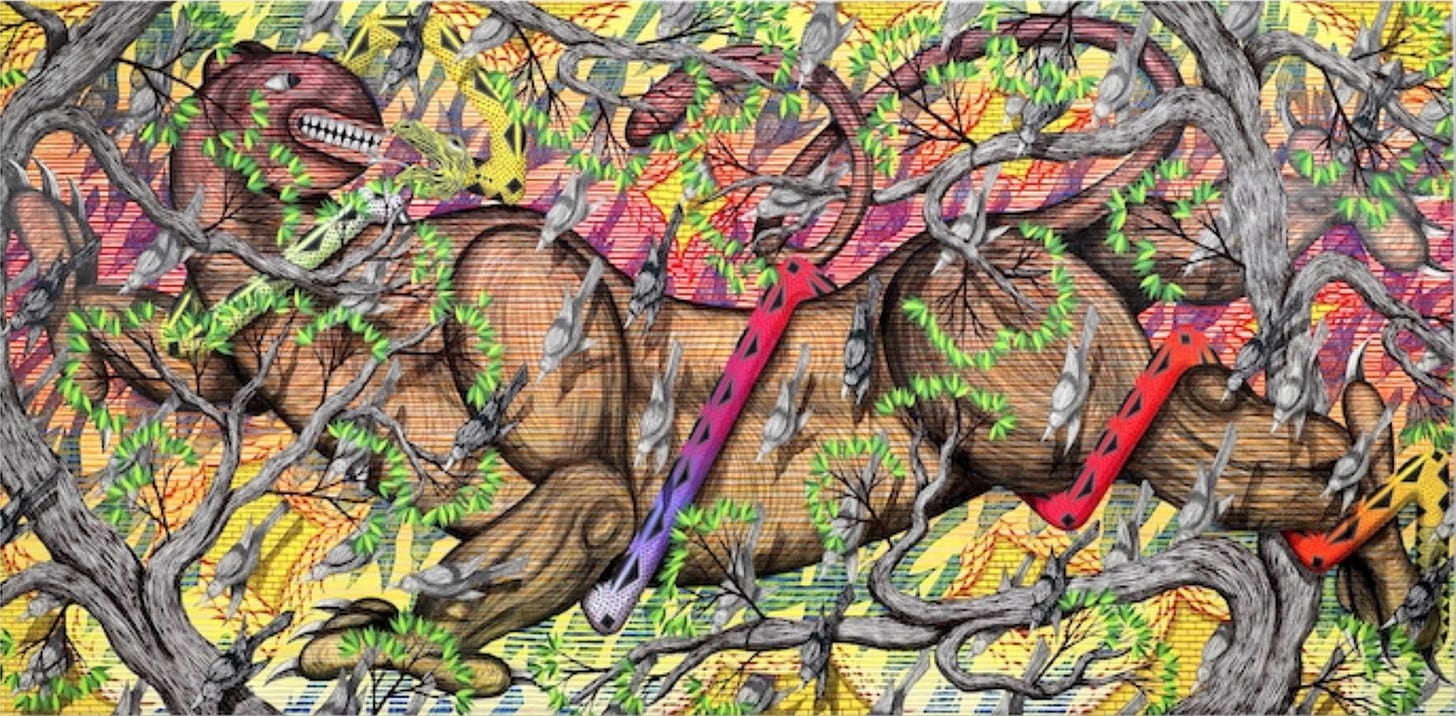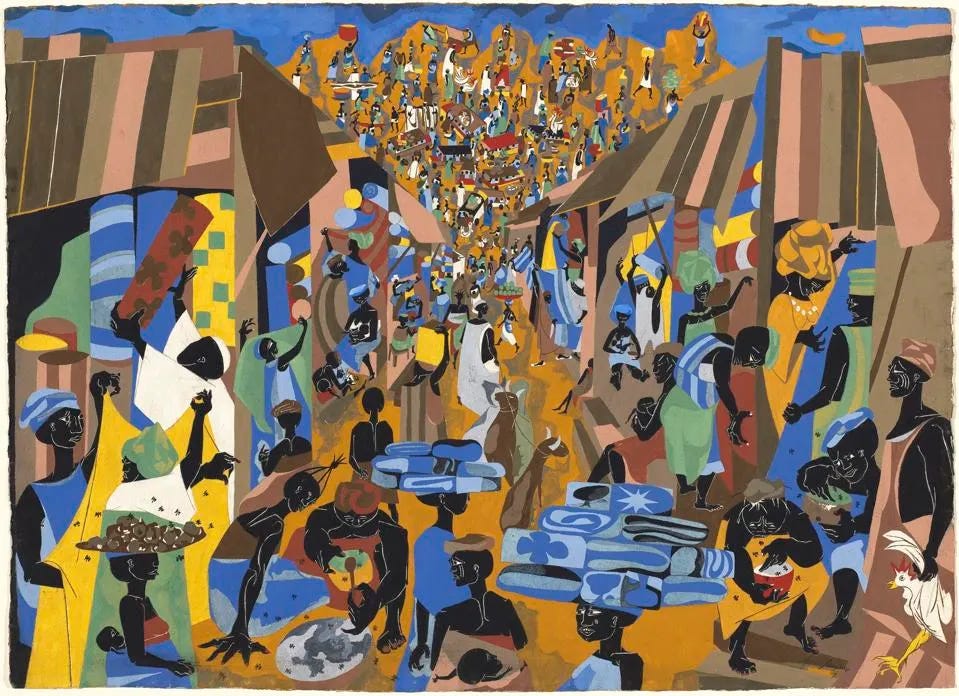The Cassette At 60
“The truth knocks on the door and you say, "Go away, I'm looking for the truth," and so it goes away. Puzzling.”― Robert M. Pirsig
In the early nineties, my friend Sean, who was working in downtown San Francisco, invited me to venture down to a bar he had found that had caught his interest. The bar, on Market Street, was a shoe-boxed space taken up with the long drink counter that stretched from one end to the other. It was an old-fashion burlesque bar complete with red velvet carpeting the walls everywhere except for where the rich mahogany shelves showing off the bottles of booze. There was a stage at the far end for the dancers and next to it…which is what caught my eye and why I bring this up today…was a huge reel-to-reel tape machine built into the wall. It was up and running, fortifying the space with music of the likes of Dinah Washington and Louis Prima. The reels revolved and the sounds seeped into the club, warm and magical.
It is easy to forget that there was a time that reel-to-reel players were a popular method of music appreciation. Audio tape has the ability tape to store and reproduce sound recording in a superior fashion. Large reel-to-reel players became a fashion item for any sound-junkie's hi-fi console, with over one million homes having the players by 1953. Record companies hit the market with new releases on this tape format, producing them from the 50s, through the 60s and still in the mid-1970s (you can get 1975’s Chicago’s Greatest Hits on reel-to-reel right now on discogs for $35). Nowadays, while there is the odd reel-to-reel ultra-limited release from labels who know how to reach the active handfulls of enthusiasts, the history of reel-to-reel commercial releases is held by a small consortium of collectors who still see the format as the best-in-class (right, Skip Walter?).
But there was an issue with the reel-to-reel players (or maybe more of an opportunity): they were bulky. Expensive. Hard to keep up. Without the proper care, the tape heads would ware…the internal mechanics would get wonky. And the tape itself: for the more common connoisseur it could easily break or crease if mishandled: pulling the leader from the spool, sewing it into the machine…fastening it onto the other spool…the human interaction demanded by the user caused regular mishaps. In the late 50s and early 60s the record companies started thinking about a new format that could be more durable, made more cheaply, attract even more consumers. And thus, Phillips started experimenting with smaller reel-to-reel formats, prototyping the cassette in 1962 and releasing it to the public in 1963, fifty years ago.
The cassette format revolutionized the music industry…revolutionized the recording industry, allowed people to safely take their music anywhere, while also democratizing people’s ability to record themselves, their loved ones, music and sounds around them. Cassette players could be found in the home, eventually in the car, eventually in backpacks. Whole industries emerged around different ways to experience this portable music. Car Stereo Systems. The Walkman. Boom Boxes. And what was more: you could make mixes of your favorite music, share them with your friends, control what you were listening to in your car…on a train through Europe…on a sailboat or at a library on a homework mission.
The rise of tape culture sparked a whole new world of music discovery. Bands like The Grateful Dead encouraged their shows to be taped and shared. Flea Markets included stands of people who sold hundreds of bootlegs of your favorite bands’ concerts…some whose live shows had never been distributed (some who never toured in the area where you lived). It was the first time people had the ability to trade, get exposed to, and celebrate all kinds of music and bands. Cheaply. Efficiently. While record labels worried about home taping being the end of LP sales, in actuality their business boomed during the era of the mixtape. Anyone could be a DJ…creating audio love letters for friends and affectionates. People would fall in love with music they had never known existed…music not on top 40 radio…and many times go and buy the records after.
The era of the cassette ran its course in the 80s. With one of its issues being inferior sound quality (remember tape hisssss?)…cassettes never matched the quality of the reel-to-reel player….once CDs were introduced to the market, it was a death knell. With CDs came the ability to easily have the best sound coming through your stereo and recordable CDs that allowed anyone to create a “mixtape” with that truly superior sound. The cassettes became just another outdated industry format, put behind museum glass with 8-track tapes and 78 shellack discs. But as discussed in a Signal from last year, the rise of the digital world has triggered a re-rise of the love for analog…and the cassette. While the format has not come back like vinyl has come back, more and more releases have cassettes as part of the concern.
The BBC recently announced a slew of programming around the 60th anniversary of the cassette, which they are calling Casseptember. Featuring artists like Cosey Fanni Tutti, Vashti Bunyan and Aki Onda the production looks to be both fascinating and a great look back on the small audio format that changed the world.
The Birthday Party Are a “Monstrous Beast” in First Look at Documentary Mutiny in Heaven
This documentary looks as nuts as the band was. Watching the trailer took me on a deep Birthday Party dive, including looking into another doc that was made about the band’s guitarist Rowland S. Howard leading me to a great live show during one of his career come-backs. His sound was so dark…so signature chilling. I had forgotten how iconic he really was.
George Saunders Accepts the Library’s Prize for American Fiction
“Novelist, short-story writer and essayist George Saunders was awarded the Library of Congress Prize for American Fiction Saturday evening in one of the final sessions of the 2023 National Book Festival, conferring a lifetime honor on a versatile writer whose most famous book cast one of Washington’s most famous residents in a surreal light…The Library’s Prize for American Fiction, begun under a slightly different name in 2008, seeks to recognize writers whose works convey something essential about the American experience with a unique style and heft. Previous winners include Toni Morrison, Philip Roth, Louise Erdrich, Isabel Allende, Don DeLillo and E.L. Doctorow. Last year’s winner was Jesmyn Ward.”
Meet Chet Bentley | Musician & Sound Healing Practitioner
My dear friend and former colleague Bill Bentley’s son Chet has been journeying across truly interesting musical and spiritual worlds. Such an interesting interview with this artist…
STATION TO STATION: David Platzker on the art of Ed Ruscha
Platzker does a great deep dive/overview on Ruscha’s career. Really fantastic read and see.
No Small Wonder: Dacher Keltner On The Science Of Awe
Ex-music industry vet Mark Leviton has been engaged in some deep, fascinating interviews for The Sun Magazine for some years now and this new one is one of his best. This look into awe is inspiring.
In “Telemarketers,” the Chaos Is the Point
I loved this new series from HBO featuring the most unlikely pair of researchers/documentarians of all time. And what they expose about fundraising, telemarketing, and the police=WOAH.
Preview: Andrew Schoultz "Quantum Storm Rainbow" @ Volery Gallery, Dubai
I have loved Schoultz’ work since he was scraping his way around the streets of San Francisco creating such amazing murals. This show looks out of control.
Celestial Music
By Louise Gluck
I have a friend who still believes in heaven.
Not a stupid person, yet with all she knows, she literally talks to God.
She thinks someone listens in heaven.
On earth she's unusually competent.
Brave too, able to face unpleasantness.
We found a caterpillar dying in the dirt, greedy ants crawling over it.
I'm always moved by disaster, always eager to oppose vitality
But timid also, quick to shut my eyes.
Whereas my friend was able to watch, to let events play out
According to nature. For my sake she intervened
Brushing a few ants off the torn thing, and set it down
Across the road.
My friend says I shut my eyes to God, that nothing else explains
My aversion to reality. She says I'm like the child who
Buries her head in the pillow
So as not to see, the child who tells herself
That light causes sadness-
My friend is like the mother. Patient, urging me
To wake up an adult like herself, a courageous person-
In my dreams, my friend reproaches me. We're walking
On the same road, except it's winter now;
She's telling me that when you love the world you hear celestial music:
Look up, she says. When I look up, nothing.
Only clouds, snow, a white business in the trees
Like brides leaping to a great height-
Then I'm afraid for her; I see her
Caught in a net deliberately cast over the earth-
In reality, we sit by the side of the road, watching the sun set;
From time to time, the silence pierced by a birdcall.
It's this moment we're trying to explain, the fact
That we're at ease with death, with solitude.
My friend draws a circle in the dirt; inside, the caterpillar doesn't move.
She's always trying to make something whole, something beautiful, an image
Capable of life apart from her.
We're very quiet. It's peaceful sitting here, not speaking, The composition
Fixed, the road turning suddenly dark, the air
Going cool, here and there the rocks shining and glittering-
It's this stillness we both love.
The love of form is a love of endings.















I still have a bin full of cassette tapes, including many mixtapes, even though I don’t have a tape player at present. Per my last post, a mixtape from a friend introduced me to hip hop in one meaningful swoop. Just can’t let that vessel go.
Led to peak Japanese innovation in the walkman!